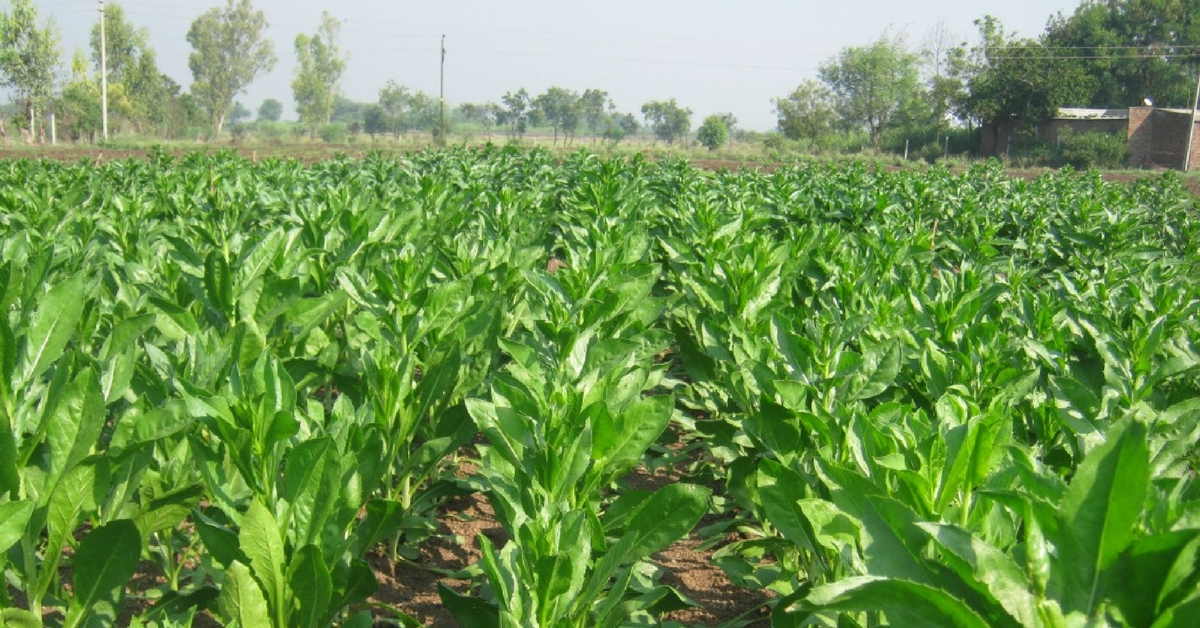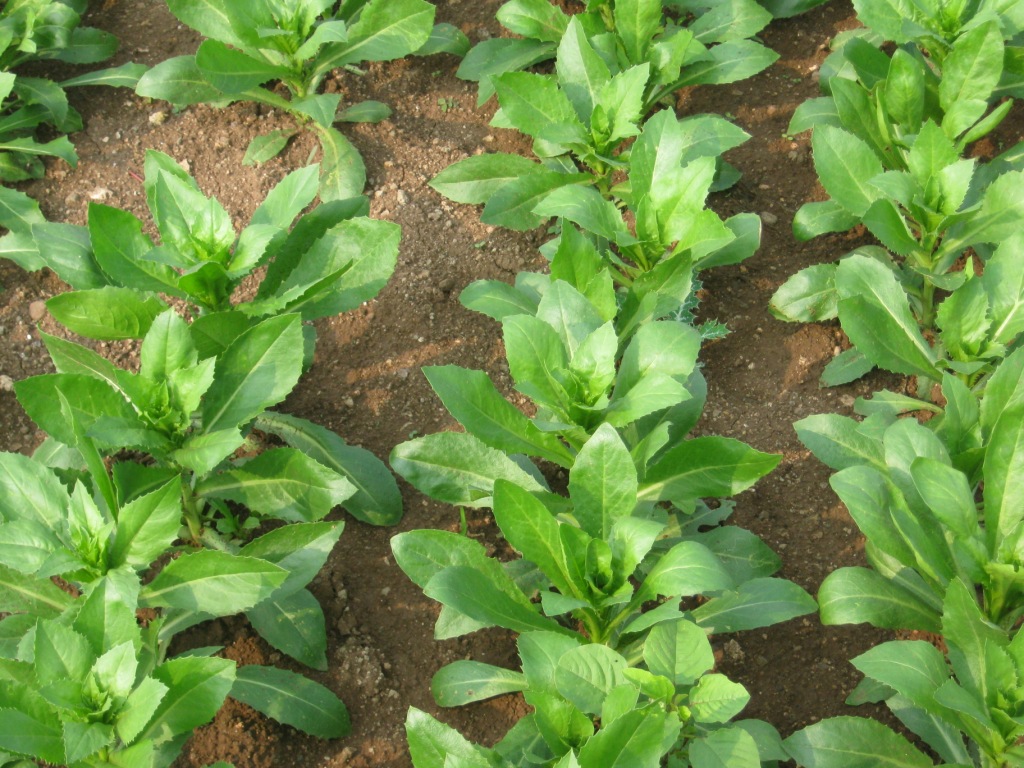TBI Blogs: How the Nutritious and Tasty Safflower Can Also Help Farmers Earn More
Native-to-India Safflower has immense health benefits, as well as great remuneration potential. Nandini Nimbkar and Anil Rajvanshi take a closer look at the opportunities offered by cultivating this multi-purpose crop.

Vegetables are considered essential for well-balanced diets since they supply vitamins, minerals, dietary fiber, and phyto-chemicals. In the daily diet, vegetables have been strongly associated with improvement of gastrointestinal health, good vision, and reduced risk of heart disease. Leafy vegetables, such as safflower, especially may offer protection to humans against chronic diseases such as diabetes and some forms of cancer.
Safflower (Carthamus tinctorius L.), a multi-purpose crop that has been grown for centuries in India for its flowers, used as a dye source and for medicinal purposes, and for its seeds, which yield quality oil rich in polyunsaturated fatty acids (linoleic acid, 78 %). The seedlings of safflower are delicious. Young leaves and thinnings of safflower at early stages of growth are used as pot herbs, and as green leafy vegetables in salad locally in and around the area of its production in India and some neighbouring countries.
As the crop develops, the bottom leaves are also consumed during various stages till the completion of the flowering stage. Safflower leaves are a good source of fibre, minerals, vitamins, and antioxidants.
The following are the major uses of green safflower leaves:
- Eaten as vegetable.
- Rich in Vitamins A and C, iron, phosphorus, calcium, phenolic compounds, riboflavin, and fibre, and thus useful in providing the dietary constituents needed for preventing obesity and coronary diseases.
- A rich source of flavonoids, and may be a good source of bio-active components when used as a functional leaf tea.
- Acts as a diuretic and also improves appetite.
- Safflower foliage tea is used to prevent cardiac and cerebral vascular diseases in China.
- Safflower foliage brew can supposedly prevent abortion and female sterility, and is popular in India and Afghanistan.
- Leafy safflower sprouts have high total phenolic acid content and antioxidant activity.
In spite of being a highly nutritious leafy vegetable, safflower has not been able to attain commercial status due to lack of information about the performance of different varieties, monetary returns in different seasons, and nutritional benefits accrued from them.
Therefore, in order to popularize safflower as a leafy vegetable, Nimbkar Agricultural Research Institute (NARI), Phaltan has started research by screening varieties in different seasons to see if safflower can grow round the year as a vegetable crop. Safflower has many advantages like ease of growing and its hardy nature, producing a crop even under adverse soil and climatic conditions. So, exploitation and promotion of this underutilized crop as a leafy vegetable will not only impart health benefits to the consumers, but also significantly enhance the income of the safflower growers (Table 1).
Table 1. Cost of growing, days to harvest, and fresh yield of safflower and other leafy vegetables in 7 m2 kitchen garden.
| Crop | Growing Cost (₹) | Days to harvest | Fresh yield (Kg.) |
| Safflower (Kardi, kusum) | 20 | 25-30 | 0.28-5.46 |
| Spinach (Palak) | 40 | 35-40 | 5.95 |
| Fenugreek (Methi) | 20 | 35-40 | 1.33 |
Field experiments at NARI showed that in addition to the regular winter season, safflower also grows in both summer and monsoon seasons as a vegetable crop. Hence, regular round-the-year supply of safflower as a leafy vegetable for consumers can be assured.
Biochemical analysis of safflower leaves revealed that for the best safflower variety, content of fat, protein, Vitamin C, and phenolic compounds was higher than those for a market sample of fenugreek and spinach (Table 2). Evaluation for quality parameters revealed that nutritional value of safflower as a leafy vegetable is comparable to that of fenugreek and spinach (Table 3).
Table 2. Nutritional analysis of different leafy vegetables carried out at NARI
Fenugreek and Spinach samples from the market.
| Crop | |||
| Safflower | Fenugreek | Spinach | |
| On dry weight basis | |||
| Fat (%) | 1.1-2.8 | 1.3 | 1.1 |
| Protein (%) | 21.0-29.7 | 21.8 | 23.8 |
| Vit. C (mg./100 g.) | 8.1-19.0 | 18.2 | 10.9 |
| Phenolic compounds (mg./100 g. of GAE) | 76.0-234.9 | 218.6 | 99.9 |
| Safflower data is a range for different varieties grown at NARI. | |||
Table 3. Nutritional attributes of different leafy vegetables from literature
| Crop | |||
| Safflower | Fenugreek | Spinach | |
| Energy value* (Kcals.) | 33 | 49 | 26 |
| Moisture (g.)* | 91 | 86 | 92 |
| Minerals (g.)* | 1 | 1 | 2 |
| Carbohydrates (g.)* | 4 | 6 | 3 |
| Calcium (mg.)* | 185 | 395 | 73 |
| Phosphorus (mg.)* | 35 | 51 | 21 |
| Iron (mg.)* | 6 | 2 | 1 |
* Values for 100 g. of edible portion.
We need to publicise the high returns from safflower as a leafy vegetable (in a short period of 30 days from sowing), and its high nutritional quality, to popularize it. This will increase the demand for safflower as a vegetable.
Farmers can easily meet this from the regular safflower they grow as an oil-seed during winter, as they thin and remove the excess plants 30-35 days after sowing.

Farmers can market the removed plants as a leafy vegetable, in addition to being fodder for animals, to earn additional income. One can also remove the lower 3-4 leaves 30-40 days after sowing without adversely affecting oil-seed productivity. The income from selling this can meet the entire cost of production of the crop in advance.
This can help the farmer in meeting all the future input needs of the crop. The income from the seed and flowers will be net income in the farmer’s hands. To achieve this, it is important to promote safflower among the masses, and link the cultivators to the market. This will not only enhance income of safflower farmers, but also help in ensuring nutritional security of consumers.
High vegetable yield under summer and monsoon conditions has revealed the suitability of safflower for two unconventional growing situations. The promotion of safflower will provide an additional nutrient source to consumers, and source of remuneration to safflower growers.
Safflower seeds are available from NARI. For more information, contact the Institute on its website, and on Facebook.
Like this story? Or have something to share? Write to us: [email protected], or connect with us on Facebook and Twitter.
NEW: Click here to get positive news on WhatsApp!
This story made me
- 97
- 121
- 89
- 167
Tell Us More
We bring stories straight from the heart of India, to inspire millions and create a wave of impact. Our positive movement is growing bigger everyday, and we would love for you to join it.
Please contribute whatever you can, every little penny helps our team in bringing you more stories that support dreams and spread hope.



















